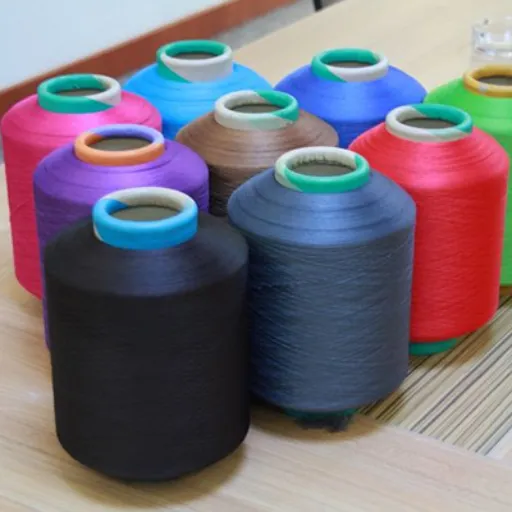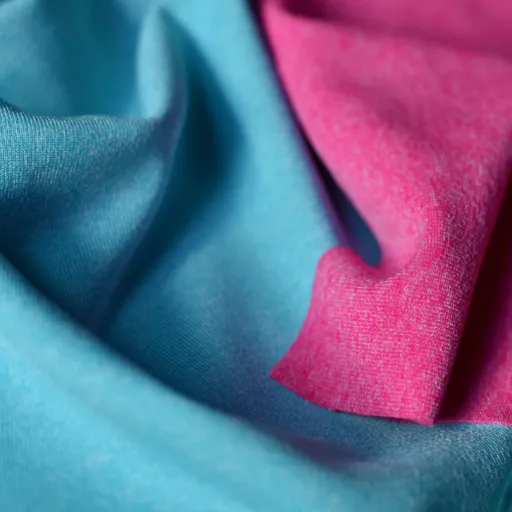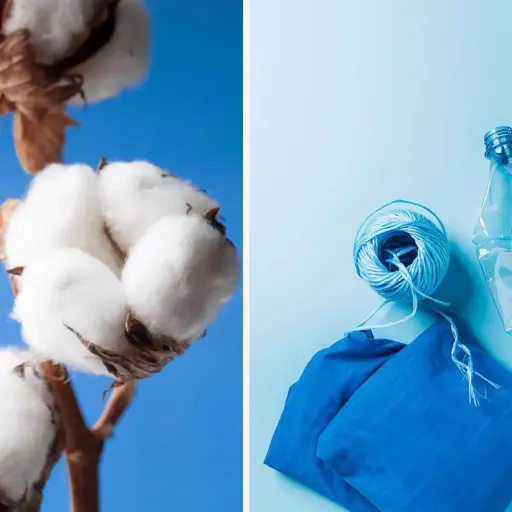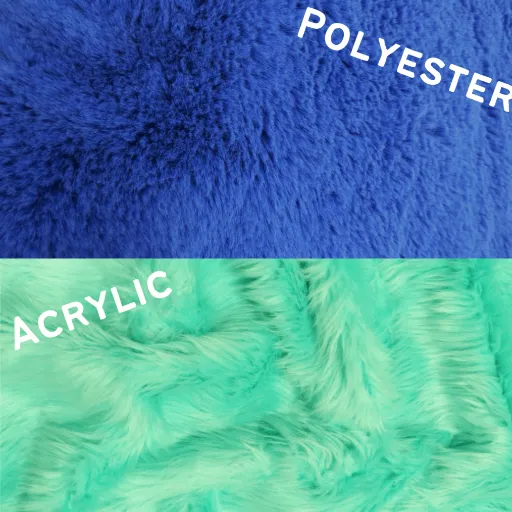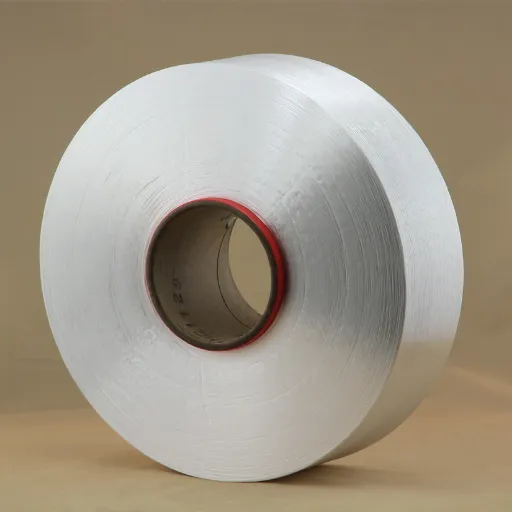In the wake of Polyester Staple Fiber’s creation, the textile industry’s needs for sustainable and high-performing fabrics is being met. This is because PSF provides unrivaled durability, versatility, and cost-efficiency. From apparel to home furnishing to even industrial products, PSF tapestries displays an unmatched adaptability to diverse requirements without compromising quality or dependability. This article will analyze PSF’s characteristics, its innovative manufacturing processes, and also its impact on modern textile solutions PsF is now regarded as the cornerstone of the fabric industry, and whether you are a textile professional, an innovator or simply a curious technology enthusiast, this comprehensive guide will help you understand the reasons that justify its significance.
What are Polyester Staple Fibers?
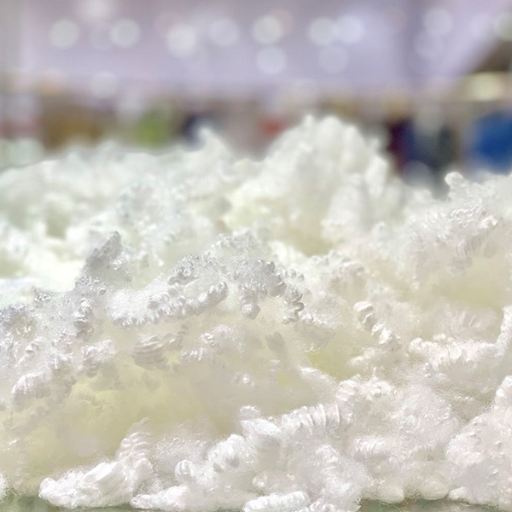
Polyester Staple Fibers or PSF are short-length textile fibers produced from polymer polyester. The manufacturing of synthetic fibers PSF involves cutting continuous polyester filaments into short prepared lengths which can be spun into slivers or blended with cotton, wool and other natural spun yarns. Wrinkle and shrink resistant PSF is often preferred in garments, household upholstery and industrial products due to its ability to withstand a range of mechanical forces, long service life, and strength.
How is polyester staple fiber produced?
Producing polyester staple fiber (PSF) requires individual steps that are appropriate for the particular technology to achieve the required reproducibility, quality standards, and functional characteristics of the final product. It all starts with Polyethylene Terephthalate (PET) as the product of PTA and MEG’s chemical reaction. PTA and MEG can be obtained via polymerization. Once formed, molten PET undergoes spinneret extrusion to create long continuous filaments.
Uniformity is critical in cooling and solidifying the filaments, which must happen rapidly. The filaments are then drawn to improve their tensile strength as well as their molecular orientation. MD PET filaments are further crimped in order to increase their elasticity and enhance the fabrics ability to blend with other materials. The crimped fibers are then cut into specific lengths which range from 1.5 to 15 deniers depending on their use. Once collected, the fibers are baled and packaged for production in textiles and other industries. Technology and scaling efficiencies improve with time providing greater control over fiber properties such as denier, luster and dyeability which guarantee high performance in end-use applications.
What are the key characteristics of polyester staple fibers?
PSF is suitable for a broad range of versatile and multiple-use industrial and consumer items alongside their characteristic to be form fitting and multifunctional. Below is a detailed list of their key characteristics:
- Durability
PSF combine a range of qualities that contribute to the longevity and functionality of fabrics enduring multi-directional physical forces throughout their use. Durable Heat Resistant Polyester Staple Fiber Fabric undergoes accelerated washing and decontamination, possessing abrasion-proof fabric features protected by diminished density. Values of tensile strength usually rest between average values of 2.5 to 7.0 g/den (grams per denier).
- Moisture Resistance
Polester fibers have a very low absorbent value of moisture under standard atmosphere condition and moist regain of 0.4%. This means polester remains lightweight in humid conditions and dries quickly after exposure to water.
- Thermal Stability
Polyester Staple Fibers have good resistance to heat. Their melting point is roughly 482°F and can withstand 302°F during normal use without significant deterioration.
- Chemical Resistance
In industrial setting, their integrity toward various chemical components, including acid and bases, make them even more polished and ideal. However, they do suffer from strong alkali attack at elevated temperature.
- Dimensional Stability
Considered an effective sewing thread, carpet, and heavy fabric textile, polyester staple fibers have low shrinkage (1-2%) rate, providing dimensional stability.
Their validity, multi-functionality, and cost efficiency make them burgeon in the modern textile industry as they are dominating crucial fields like clothing, furniture, guarding textile, automotive fabric, and industrial fabric.
What is the difference between virgin polyester and recycled polyester?
The virgin polyester and polyester recycled differ fundamentally in environmental impact and their origin. Virgin polyester is fully derived from petroleum raw materials. It goes through a process called polymerization which synthesizes polyester for a specific purpose. This specific method guarantees the yield of pure polyester or polyester with uniform characteristics, which is ideal for technologically demanding applications. Virgin polyester does offer a clean end product, but its manufacturing process has several environmental issues such as high energy consumption, fossil resource reliance, emission of greenhouse gases, and increased burdening of the ecosystem.
Recycled polyester, on the contrary, is manufactured out of post-consumer waste like PET containers or scraps of polyester used prior to consumption. This waste is converted into polyester fibers using mechanical or chemical processes. Although it does lose some of the functional characteristics of virgin polyester, the ability to withstand extreme temperatures, tensile strength, and being more resistant to carbon emissions makes it viable for less tuberculosis. Also, it does help divert waste from landfills and prevents further usage of raw materials.
Though the perks are plenty, recycled polyester also has drawbacks. Recycled polyester fibers have a mechanical recycling limit due to processes like shredding, cutting, and washing. Additionally, implementation of advanced methods is expensive and labor intensive. Still, for businesses seeking to align their sustainability targets with recycled textile material functions, the incorporation of recycled polyester is proving crucial in the shift towards more sustainable textiles.
What are the Applications of Polyester Fiber?
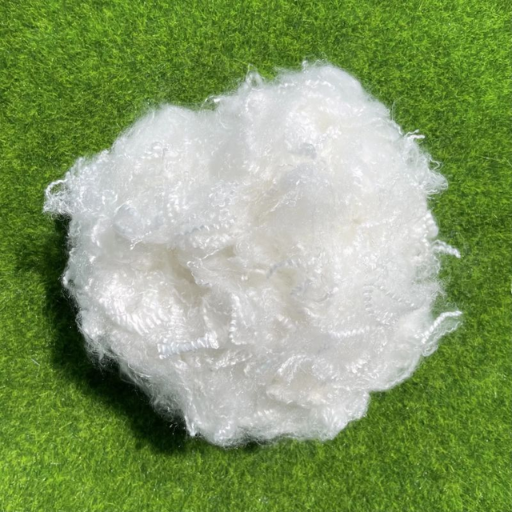
Due to its remarkable strength, wide range of uses, and low cost, polyester fiber is popular in many businesses. Some of the most common uses are:
- Textile Industry: For apparel and furnishings, such as curtains, carpets, and industrial textiles for their strength, and low maintaining properties (wrinkle, shrink resistant).
- Automotive Sector: Used in carpets, seat covers and clips as they are tough and wear resistant.
- Packaging: Used in the manufacturing of PET bottles and flexible packaging.
- Sports and Outdoor Equipment: Makes tents, ropes, as well as clothes for hiking since it’s lightweight and moisture resistant.
- Medical Field: Used in hygiene post-surgical products such as non-woven fabrics used for surgical gowns and masks because it is clean and disposable.
These uses demonstrate the flexibility of polyester fiber and its growing importance in manufacturing.
How is polyester staple fiber used in the textile industry?
Because of its adaptability and reasonable pricing, Polyester staple fiber (PSF) has marked significance in the textile industry. PSF is extensively spun and woven into numerous fabrics, as well as blended with natural fibers like cotton or wool to create blended fabrics. Such blended fabrics tends to be stronger, more wrinkle-resistant, and more durable. Additionally, PSF has a strong rate of preference among materials for upholstered home furnishings, including carpets, pillows, and quilts, owing to non-woven textiles. It is also used for the crafting of furniture. Home textiles, as well as textual linens, do not absorb moisture due to its hydrophobic nature, therefore, it can be used in activewear to help keep the user comfortable during demanding physical watching, such as high-octane sports. To make such textiles, padding externally, or quilting, the fibers for padding may also be engineered directly to the fabric. Besides, advances in fiber engineering have made it possible to manufacture recycled polyester staple fiber from PET bottles which helps in more sustainable and eco-friendly textile manufacturing worldwide.
What are the benefits of using recycled polyester in products?
- Environmental Impact Reduction
By extracting virgin petroleum, a fundamental component of ordinary Polyester, Recycled polyester lessens this requirement substantially. Studies indicate that making recycled polyester requires 59% less energy than the energy required in producing virgin polyester. Also, by using recycled polyester, plastic waste is diverted from landfills and oceans. Around 1 ton of recycled polyester can prevent about 50,000 water bottles from being disposed of.
- Lower Carbon Footprint
Applicable research shows that by making recycled polyester instead of virgin polyester, there is a guaranteed reduction of greenhouse gases produced. Assessments also showed that these types of polyester can decrease CO₂ emissions by as much as 32%, thus allowing makers of textiles to switch to a less sustainable polycarbonate lowering global carbon emissions.
- Resource Conservation
Making new fibers from plastic waste such as PET bottles helps conserve crude oil, a non-renewable resource, while also assisting in the aims of adopting a circular economy. For every pound produced, about 0.5 gallons of fuel made from petroleum is saved. This strategy diminishes reliance on limited natural materials.
- Durability and Performance
Recycled polyester still retains the stretching and shrinking resistance of virgin polyester. It is lightweight and incredibly durable. This makes it preferable for use in outerwear, activewear, and accessories as it does not compromise on quality or performance.
- Consumer Demand for Sustainability
Products made with recycled materials are noticed more by eco-friendly consumers. A survey conducted of the same year claimed 73% of users are inclined towards using products that practice sustainability in some shape or form, which shows clear market benefits for using recycled polyester.
The recycled version of polyester is a vital understanding action for embracing sustainable and eco-friendly quality textiles while mitigating the environmental impact.
What are the Different Types of Polyester Staple Fiber?
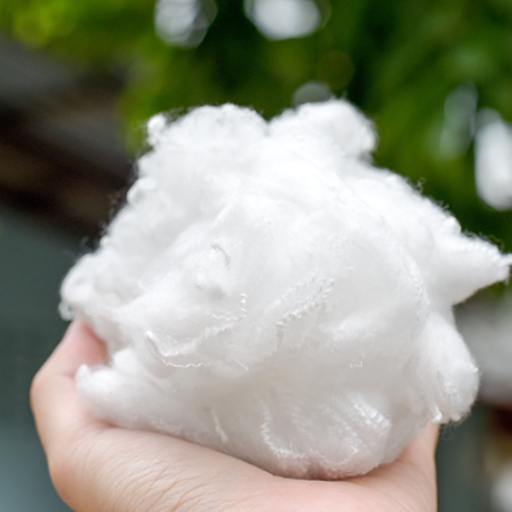
These two subsections form the two main divisions under which polyester staple fiber (PSF) is categorized, in relation to its origin and characteristics:
- Virgin Polyester Staple Fiber
This type is produced from petromaterial substances such as PTA and MEG. Its applications spand textiles, automotive industry, and home furnishing which is a testimony to its robust strength.
- Recycled Polyester Staple Fiber
This variant was produced from the plastics in products like plastic bottles, so it can serve the purpose of being sustainable for the nonwoven and fashion industry.
All types can be further subdivided in hollow or solid type fibers depending on their end use.
What are the various types of polyester available?
According to the processes which polyester is derived from, it can be split in many types. They include:
- PET (Polyethylene Terephthalate)
Apart from being its most common type, PET is also the most utilized kind of polyester. It can withstand heat and chemicals and so, performs well across industries. Its strength and durability makes it suitable for textiles, packaging materials, and bottles.
- PCDT (Poly-1, 4-Cyclohexylene Dimethylene Terephthalate)
Compared to PET, PCDT is less common, but offers greater elasticity and resilience. Its main application is in home furnishings and heavy-duty fabrics where durability and aesthetic appeal are required.
- Plant-Based Polyester
It is more environmentally friendly because plant-derived polyester comes from renewable resources. Its sugars, such as sugarcane or corn, make it eco-friendly. This type of polyester still significantly lessens the reliance on fossil fuels. It does maintain many of the mechanical properties of polyester.
- Microfiber Polyester
This variant is particularly in the cleaning, clothing and upholstery industries because it has exceptional absorbency and feel. It also has incredibly fine fibers which makes its texture soft and increases the surface area.
Moisture-wicking, UV resistance, and flame retardancy are some of the desired characteristics that these types of materials can be blended with. Such blending caters to various commercial and industrial purposes.
How do textured yarns enhance polyester products?
Through changing the physical structure of the fibers, textured yarns greatly enhance the functional and aesthetic properties of polyester products. The incorporation of texturing increases elasticity. This is particularly useful in areas that require stretch and flexibility, for example, activewear or fitted garments. In addition, the softening and texturing of fabrics increases softness and breathability which increases comfort for the user. Furthermore, these changes also improve the insulation properties because air is retained more efficiently within textured fibers, making them useful for thermal apparel.
Textured yarns have better uptake of dye as a result of their irregular surfaces, which allow for more vigorous color and vibrant pigment to be incorporated into the finished product. From this reason, they are a good choice for industries that value quality and well-made fabrics. Textured yarns serve for reduced weight of the fabric, providing robust and lightweight options for a multitude of uses. All of these improvements make the versatility and performance of polyester stronger, cementing its position as the foremost synthetic fiber in contemporary use.
What are the Environmental Impacts of Polyester Staple Fiber?
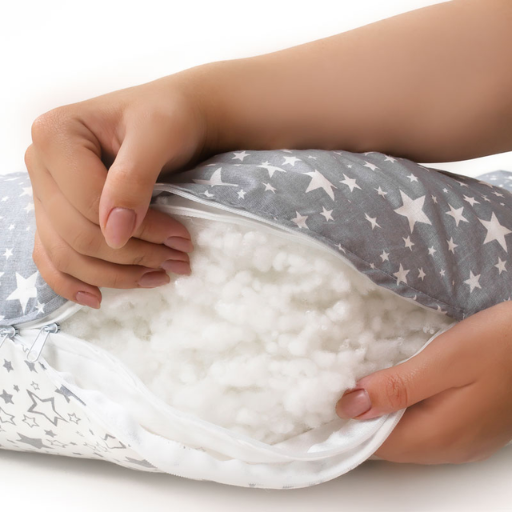
Polyester staple fibre is made from a petroleum source which affects the environment negatively from the very beginning. The production phase uses fossil fuels, which is polyester’s production stage, and releases greenhouse gases into the atmosphere, hindering climate change further. Additionally, the energy-intensive manufacturing process consumes substantial electricity and water resources.
Aged polyester finds it very hard, if not, impossible to biodegrade which enables it to linger in the environment for multiple decades. Detrimental microplastics from polyester fibers are shedding during the washing process, many of which accumulate in water bodies and endanger aquatic creatures. Even though recycling programs are available, an astonishingly small amount of polyester is actually recycled due to difficult collection processes for used materials as well as contamination adding unnecessary materials, Increasing pollution and the harm to mother earth.
How does using recycled polyester staple fiber help the environment?
Recycled PSF rPSF plays a significant role in alleviating the environmental fabric of the textile industry and the production and waste management system. The production of rPSF alleviates dependence on virgin polyester derived from non-renewable petroleum resources by reprocessing existing polyester materials like discarded plastic bottles and post consumer waste. In comparison to conventional polyester fiber manufacturing, this approach lowers greenhouse gas emissions, water consumption, and energy use. Also, the addition of rPSF aids in the management of plastic waste and prevents further landfill and ocean pollution. Lifecycle assessments indicate that using rPSF achieves up to 79% of carbon emission reduction when compared to using virgin polyester, contributing to the global goal of fighting climate change. The use of rPSF is easily adjustable, which helps in advocating for a circular economy while aiding companies across the globe in the fashion or automotive industries to adopt eco-friendly practices.
What are the challenges in the production of polyester staple fiber?
The manufacturing processes for polyester staple fiber (PSF) face challenges concerning the environment, thorough resource use, and quality control requirements. One main challenge is the enormous reliance on non-renewable petroleum-derived PTA and MEG. The PSF production also claims a lot of energy, which increases the greenhouse gas emissions. PSF production is already producing, thus making its sustainability questionable.
Moreover, incorporating recycled raw materials can pose a problem. Factors such as recycled input contamination and poorly defined feedstock accompanied by pathetic sorting, and cleaning technology are capable of damaging product durability, tensile strength, and its ability to be dyed. On the other hand, there is the notion that rPSF comes with lower capex barriers, polyestert staple production not only incurs high processing technology but it is also cost limiting to devolved manufacturers.
R&D investments unarguably poses a burden to the them. Furthermore, the aesthetic proposals of replaceable chemical effluents meld with corporate goals to use energy more efficiently while trying to shift into more circular production models, pierce corporate idiomy. Sharply reducing waste management while dealing with micro plastic shedding during the product lifecycle poses an increasing threat to environmental issues simultaneously aims higher production efficiency and these are major challenges to the SDFS method.
Reference Sources
-
Apparel Manufacturing Supply Chain from Manufacturer to Consumer: This study discusses the growth in polyester fiber consumption, driven by increasing demand in the apparel manufacturing supply chain. It highlights the role of polyester fibers in meeting market needs.
-
Polyester Fibres: Today and Tomorrow: This article explores the production trends of polyester fibers, including staple fibers. It notes that staple fiber output growth rates are expected to increase, with a focus on future production and market dynamics.
-
Polyester: A Cultural History: This study takes a cultural perspective on polyester, including its transformation into recycled polyester staple fibers. It discusses the historical and modern applications of polyester in various industries.
Frequently Asked Questions (FAQs)
Q: What is polyester staple fiber and how is it made?
A: Polyester staple fiber (PSF) is a synthetic man-made fiber created directly via the polymerization process of polyester material such as PTA (purified terephthalic acid). This process involves melting polyester pellets and then cooling them to form staple fibers that can be used in various textile applications.
Q: What are the main uses of polyester staple fiber?
A: Polyester staple fiber plays a crucial role in the textile industry. It is commonly used to produce spun yarn made from polyester, which is then utilized in clothing, home furnishings, and industrial textiles due to its durability and versatility.
Q: How does the process of polyester differ from other fiber production methods?
A: The process of polyester involves a unique polymerization process that combines raw materials to create polyester material such as PTA. Unlike natural fibers, which are derived from plants or animals, polyester is a synthetic fiber production method that allows for a consistent quality and performance across various applications.
Q: What is the significance of hollow conjugated fiber in the context of polyester staple fiber?
A: Hollow conjugated fiber is a type of polyester staple fiber that features a hollow structure, enhancing its insulation properties and making it lightweight. This type of fiber is often used in applications such as insulation for jackets and bedding to provide warmth without adding bulk.
Q: How does the global demand for polyester staple fiber affect its production?
A: The global demand for polyester staple fiber has a significant impact on its production, with manufacturers increasing output to meet the rising needs of various industries. This demand drives innovation in fiber production techniques, including the development of recycled polyester, which requires less energy and resources.
Q: What are filament yarns, and how do they relate to polyester staple fiber?
A: Filament yarns are continuous strands of fiber, often produced from polyester filament. While polyester staple fiber is made from shorter lengths of fiber, filament yarns provide a smoother texture and are typically used in different types of fabrics, highlighting the versatility of polyester in textile manufacturing.
Q: Can polyester staple fiber be recycled, and what is the process?
A: Yes, polyester staple fiber can be recycled. The production of recycled polyester requires processing used polyester products to recover the material, which is then reformed into new fibers. This process helps reduce waste and meets the increasing demand for sustainable textile solutions.
Q: What advantages does polyester staple fiber offer compared to natural fibers?
A: Polyester staple fiber offers several advantages over natural fibers, including greater durability, resistance to moisture, and ease of maintenance. It also provides a consistent quality and can be produced in various forms, making it suitable for a wide range of applications.










